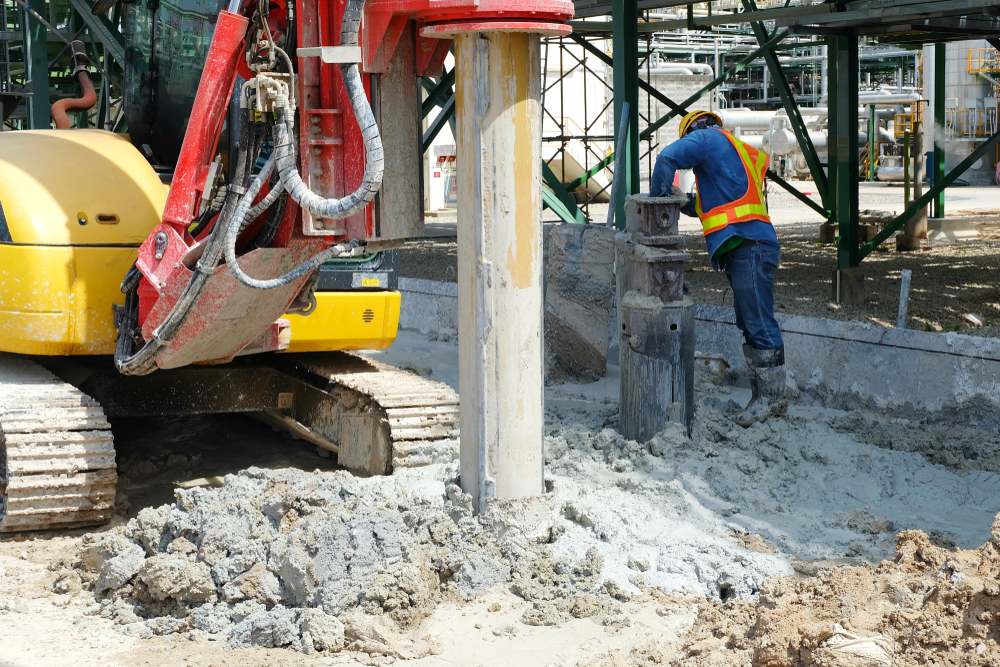The Main Principles Of Geotechnical Engineering For Construction Projects
The Main Principles Of Geotechnical Engineering For Construction Projects
Blog Article
The Greatest Guide To Geotechnical Engineering For Construction Projects
Table of Contents4 Simple Techniques For Geotechnical Engineering For Construction ProjectsGeotechnical Engineering For Construction Projects - TruthsThe Ultimate Guide To Geotechnical Engineering For Construction ProjectsNot known Details About Geotechnical Engineering For Construction Projects The Main Principles Of Geotechnical Engineering For Construction Projects The Single Strategy To Use For Geotechnical Engineering For Construction ProjectsSee This Report on Geotechnical Engineering For Construction Projects
Principles and Technique of Ground Renovation. Ground Improvement Principles And Applications In Asia. Layout evaluation in rock technicians.Cengage Understanding, Stamford, 666 p. Atkinson, J., 2007. The mechanics of soils and foundations. The Observational Method in ground engineering principles and applications.
Getting My Geotechnical Engineering For Construction Projects To Work
Lab and area screening plays an essential function in this process. By removing samples from the planet's subsurface and applying a collection of tests, geotechnical designers can anticipate the behavior of dirt layers and assess their viability for numerous construction efforts. The essence of geotechnical design in civil design can not be overstated, attributable to several aspects: The initial action in any geotechnical research involves establishing the soil kind at the building website.
Understanding these attributes ensures that only appropriate soil types are picked for the development, consequently averting prospective architectural failings. The foundation functions as the bedrock of any building and construction project. Choosing the proper foundation type is a decision that rests on the comprehensive analysis offered by geotechnical design. This makes certain the longevity and stability of structures by fitting the lots they will certainly birth.

Geotechnical website examination is an essential step in the planning and execution of any building and construction task. It involves the collection and analysis of data associated to the physical homes of dirt and rock under a suggested construction website. This details is vital for the style and construction of secure, steady, and sustainable frameworks.
10 Easy Facts About Geotechnical Engineering For Construction Projects Described
, additionally known as subsurface expedition, includes a collection of tasks intended at identifying the dirt, rock, and groundwater problems at a building website. The primary objectives are to identify possible geotechnical risks, analyze the engineering properties of subsurface materials, and supply referrals for the layout and construction of foundations, keeping wall surfaces, and other structures.
The workdesk research helps in identifying prospective geotechnical issues and planning the subsequent fieldwork. This involves observing the topography, water drainage patterns, existing structures, plants, and any type of indicators of instability or disintegration.
Top Guidelines Of Geotechnical Engineering For Construction Projects
Shallow examination pits are excavated to straight observe and example the soil and rock. This technique works for studying the upper layers of the subsurface and identifying near-surface risks. Non-invasive geophysical methods, such as seismic refraction, ground-penetrating radar (GPR), and electrical resistivity tomography (ERT), are utilized to map subsurface conditions and identify abnormalities.
Soil and rock samples collected throughout the area investigation are subjected to research laboratory testing to establish their physical and mechanical buildings. These tests supply crucial data for geotechnical analysis and design.
The main advantage of geotechnical site examination is making sure the safety and security of structures. By recognizing the subsurface conditions, designers can create foundations and various other architectural elements that can withstand the loads and he said ecological forces they will certainly go through. This lessens the threat of settlement, subsidence, and structural failure.
The smart Trick of Geotechnical Engineering For Construction Projects That Nobody is Talking About
This ensures effective and safe building and construction methods. Geotechnical site investigations are frequently required by building codes and laws.
This details is very useful for task supervisors, architects, and contractors in developing sensible schedules, budget plans, and contingency strategies. Geotechnical Engineering for Construction Projects. High-Rise Building in a Coastal AreaIn a coastal city, a high-rise domestic building was prepared on a site with believed loose sand down payments and a high water table. A detailed geotechnical examination, consisting of borehole exploration, CPT, and geophysical studies, was carried out
Fascination About Geotechnical Engineering For Construction Projects
Based on these searchings for, the structure style was customized to include deep pile structures expanding right into steady strata, and ground enhancement techniques, such as vibro-compaction, were executed to mitigate liquefaction threats. This aggressive strategy ensured the safety and stability of the building while avoiding expensive post-construction remediation. Facilities Growth on a Sloping TerrainA major framework job, entailing the construction of a freeway and bridges, was intended on an uneven terrain with high additional hints slopes.

The Leaning Tower of Pisa (Italy), a famous architectural wonder, is infamous for its unplanned tilt from significant geotechnical issues. The tower's foundation was inadequately created to deal with the soft, unsteady dirt under it, bring about unequal negotiation and its distinct lean. Our world is dotted with impressive facilities projectsfrom towering high-rise buildings to stretching bridgesall standing testament to the evolution of the numerous construction equipment and methods available.
Geotechnical engineering is a customized field within civil design that focuses on researching the habits of earth products. This branch digs deep into the groundinvestigating just how the dirt, rock, and groundwater at a building website can influenceand be affected bythe facilities that we erect on and right into them. Prior to a single brick is laid or a concrete structure put, geotechnical designers probe right into the earthgathering crucial information concerning the website's dirt structure, rock framework, and groundwater degrees.
Geotechnical Engineering For Construction Projects for Dummies

is a device used to examine the honesty and load-bearing capability of piles throughout setup, leveraging the concept of wave proliferation. It maximizes building efficiency by giving real-time examinations, thus making certain secure and efficient heap foundations. One of the functional applications of geotechnical engineering involves making a decision and executing the best methods for foundation building visit this page and construction.
Stack driving represents greater than the simple act of inserting architectural elements into the ground. However, it is a meticulously coordinated process of transferring a framework's lots past the much less steady soil layers closer to the surfacedown to the much more substantial strata that lie below. When it comes to heap driving, think about how geotechnical engineers adeptly utilize this method to evenly distribute the framework's weight.
Report this page